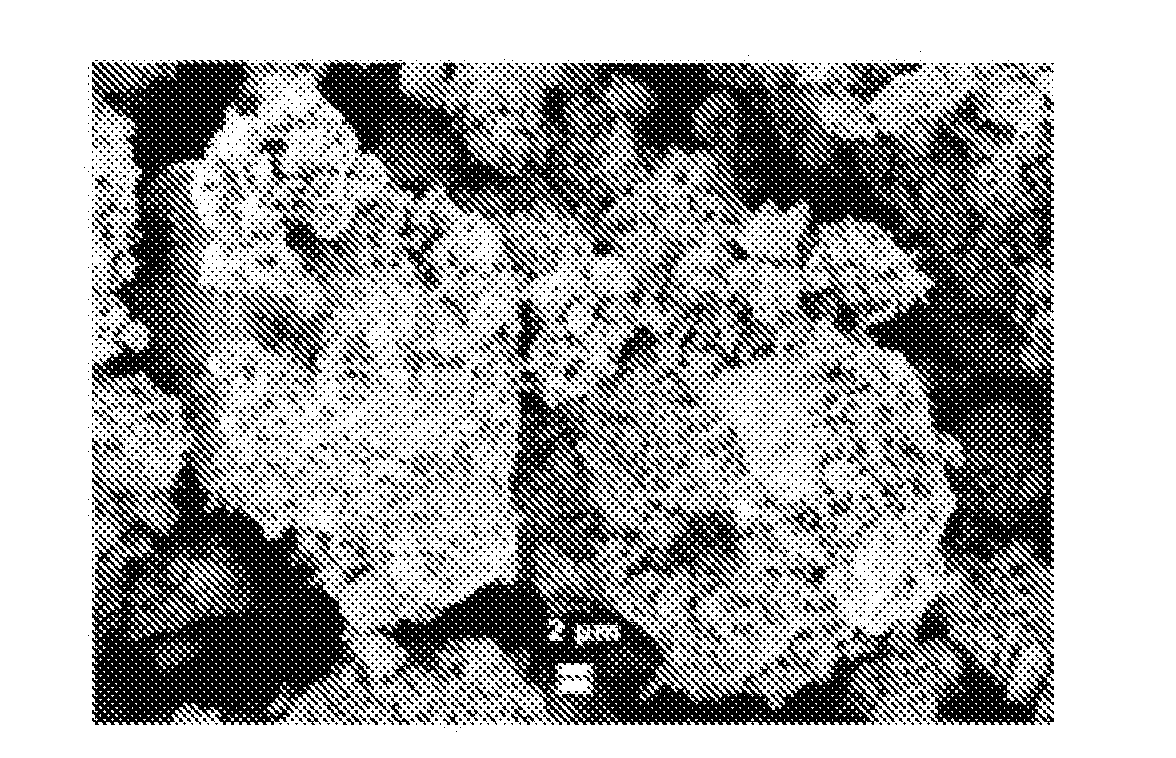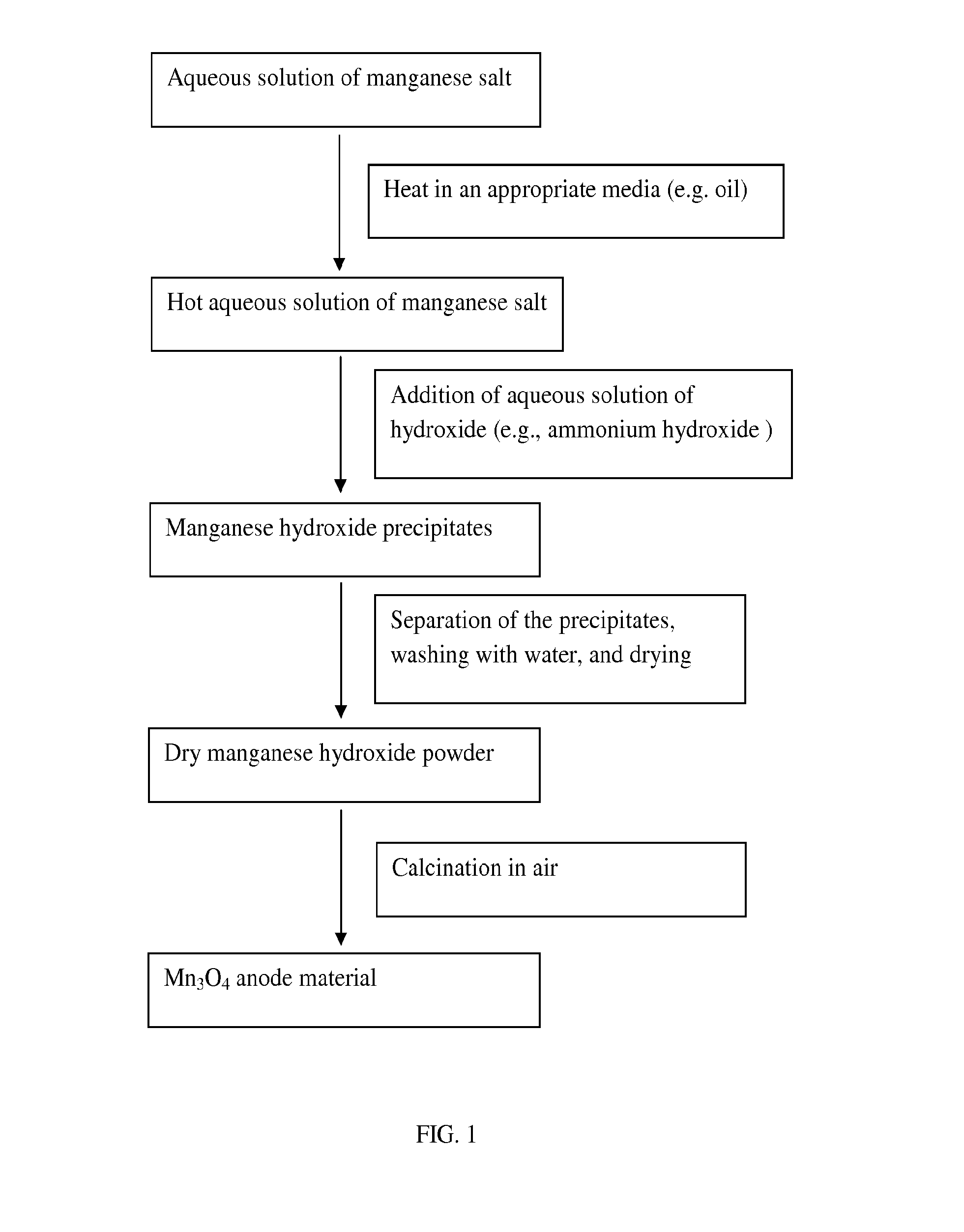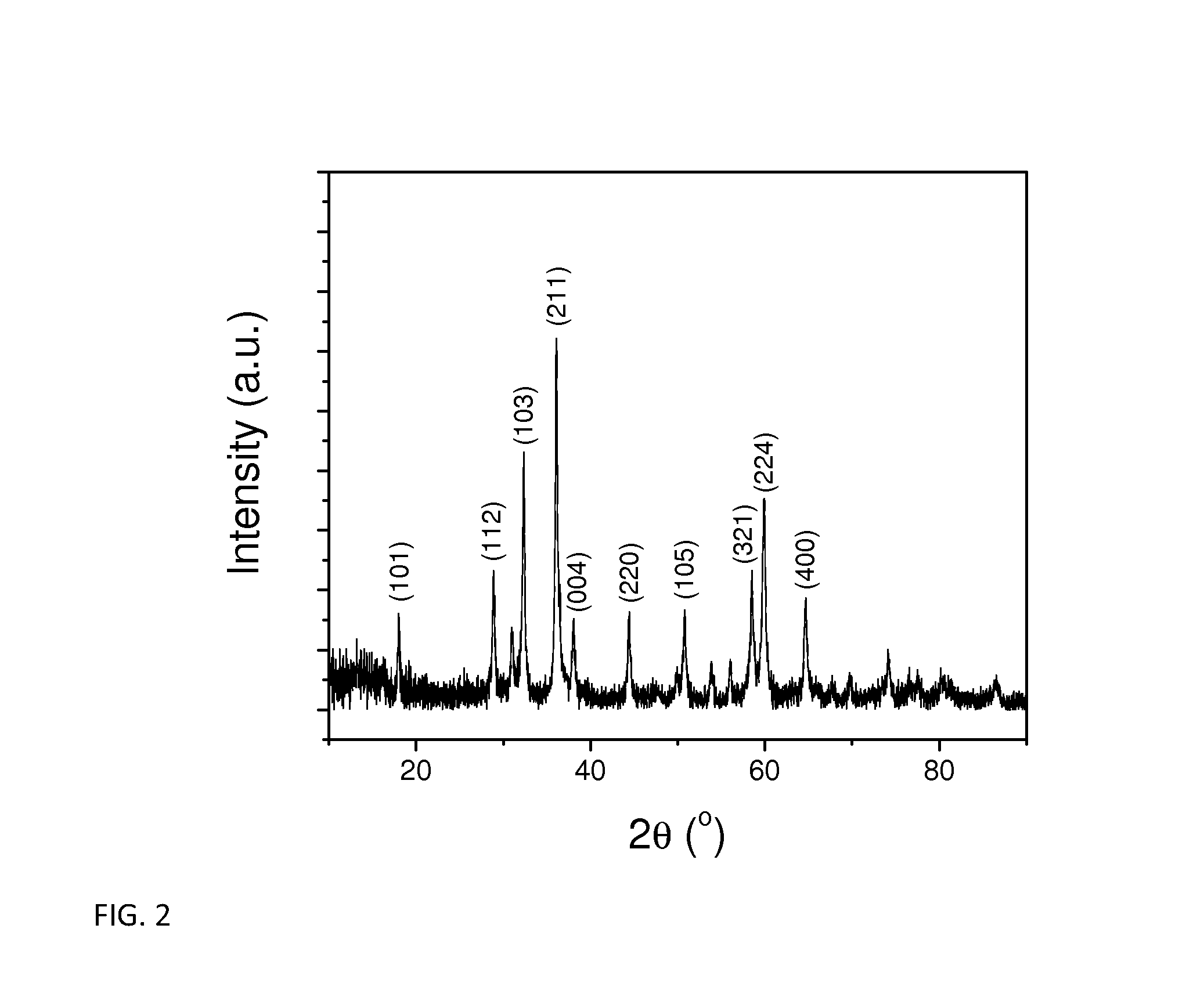Manganese oxide nanoparticles, methods and applications
a technology of manganese oxide and nanoparticles, applied in the field of metal oxide nanoparticles, methods and applications, can solve the problems of short circuiting of the cell, and achieve the effects of high stabilized reversible capacity, and high initial reversible capacity
- Summary
- Abstract
- Description
- Claims
- Application Information
AI Technical Summary
Benefits of technology
Problems solved by technology
Method used
Image
Examples
example 1
[0048]This example illustrates the preparation of nanosized Mn3O4·manganese oxide.
[0049]Nanosized Mn3O4 manganese oxide was synthesized by a simple precipitation method. Mn(OOCCH3)2·4H2O was first dissolved in de-ionized water. The solution was heated to 100° C. in an oil bath. The stoichiometrically required amount of ammonium hydroxide was added to the solution, resulting in precipitation. The precipitate was centrifuged after ˜4 h stifling, washed with de-ionized water, and dried at 80° C. overnight. The nanosized Mn3O4 was formed after heating the dried precipitates at 300° C. for 5 h. X-ray diffraction data, collected on a Rigaku Ultima IV X-Ray Diffractometer with Cu kα radiation, showed that the Mn3O4 was a single-phase material with a tetragonal spinel structure as seen in FIG. 2 The scanning electron microscopy images of the as-prepared Mn3O4 showed that the average size is about 80 nm as seen in FIG. 3.
example 2
[0050]This example illustrates the fabrication of the Mn3O4 electrode.
[0051]The Mn3O4 electrode film was fabricated with 70 wt. % Mn3O4 as the active material, 20 wt. % Super P-Li (Timcal Ltd.) as a conductive carbon-based additive, and 10 wt. % poly(vinylidene difluoride) (PVDF) as a binder. N-methyl-2-pyrrolidone (NMP) was used as a solvent to make a slurry. The slurry was uniformly coated onto a copper foil with a doctor blade. It was cut into circular electrodes of 0.71 cm2 area and dried overnight under vacuum at 100° C.
example 3
[0052]This example illustrates the configuration of coin cells for use to measure the electrochemical performance of Mn3O4 electrode.
[0053]Electrochemical measurements were conducted with CR2032 coin cells. Coin cells were assembled in an argon-filled glovebox with lithium foil as the anode and the Mn3O4 from Example 2 as the cathode, Celgard 2320 as the separator, and a solution of 1.0 M LiPF6 in EC / DEC (1:1 by volume) as the electrolyte. Galvanostatic discharge-charge tests were carried out on Maccor 4000 battery test system. The cells were cycled between 3.0 V-0.01 V at a current density of 0.25 C for both discharge and charge (1 C is defined as one lithium per formula in one hour, i.e. 117 mA / g for Mn3O4). The first and second discharge-charge curves are shown in FIG. 4, and the cycle performance is shown in FIG. 5. The coulomb efficiency with cycle number is shown in FIG. 6.
PUM
| Property | Measurement | Unit |
|---|---|---|
| particle size | aaaaa | aaaaa |
| temperature | aaaaa | aaaaa |
| voltage | aaaaa | aaaaa |
Abstract
Description
Claims
Application Information
 Login to View More
Login to View More - R&D
- Intellectual Property
- Life Sciences
- Materials
- Tech Scout
- Unparalleled Data Quality
- Higher Quality Content
- 60% Fewer Hallucinations
Browse by: Latest US Patents, China's latest patents, Technical Efficacy Thesaurus, Application Domain, Technology Topic, Popular Technical Reports.
© 2025 PatSnap. All rights reserved.Legal|Privacy policy|Modern Slavery Act Transparency Statement|Sitemap|About US| Contact US: help@patsnap.com



